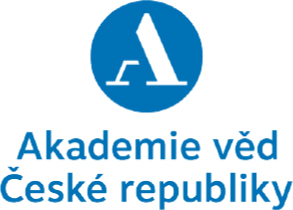Not so long ago, we could see for ourselves one of the important aspects involved in performing public opinion research – the importance of representativeness of the sample file. The Czech Social Democratic Party (Česká strana sociálně demokratická) organised a party referendum in October 2002. Among other things, it was supposed to indicate preferences of candidates for the President of the Czech Republic.
Immediately after the results were published, journalists, politicians, and regular voters gave a number of warning signs, addressing the ostensibly fundamental issues: why do the results of the ČSSD referendum differ from public opinion research results? Which of them are more precise or trustworthy? Those that rely on ten thousands of completed ballots, or those behind which there is a mere thousand of respondents? The issue is not at all a new issue and, by far, it is not the first time when it enters the wider awareness of the public.
In reality, a similar situation may be seen at the very roots of scientific public opinion research, in the USA of the 1930s. In 1936, there was a presidential campaign, and, traditionally, myriads of forecasts and “prognoses” emerged on that occasion as to the results of the election. These instances of “straw voting” also involved an amply supported forecast published by the Literary Digest magazine, that boasted 2.4 million (!) ballots, submitted by its readers. The survey marked Landon as the winner. The method of forecasting when opinions of only a certain group of people are investigated – in this case, the readership of the magazine – did not seem all right to George Gallup and his colleagues from the American Institute for Public Opinion Research. They had very different opinions concerning the methodology used for creation of precise election forecasts. Therefore, they tested their own new procedure, and enquired an incomparably smaller number of people, selected however so that the sample file copied the entire society in observed features, about their presidential favourite. They forecasted Roosevelt to be the winner of the upcoming election. Moreover, they also said who the magazine would pick as the winner, warned that the magazine would be wrong, and stated reasons for the error.
And what was the outcome back then? Who was right and forecasted the election winner correctly? Obviously, it was G. Gallup and his colleagues who respected the rules of statistics and proceeded in line with the laws of the probability theorem. They knew that if they succeeded in selecting a representative file, they need not enquire thousands of people but several hundreds would suffice. And, to the contrary, even if they enquired, for example, a file of hundred thousand respondents, who would differ from the entire population, the results acquired would most probably be erroneous.
It is not difficult to reveal the cause behind the error the Literary Digest magazine committed. Obviously, it consisted in the manner in which the opinions of people were obtained. In technical terms, this method of respondent selection is called “self-selection”, signalling that the research has practically no influence over the participation of people in the research. It is at the sole discretion of the respondent whether he/she is going to answer the questionnaire or not. Undoubtedly, especially those who are interested in the specific matter, who are affected by it somehow, or those who simply like to express their opinions on everything will respond to it. Such sample, however, does not necessarily copy the entire population! Very probably, it is a special group of people who differ from the rest in certain ways – including, probably, preferences for a certain presidential candidate. We may then cynically state that opinions expressed by them are valid just for this group and they may not be applied generally to the entire population. This is the case of the referendum in ČSSD.
The other mentioned example represents public opinion researches. G. Gallup is the founder of its modern form. Thanks to, in addition to other things, the principles of representativeness of the sample file and standardisation of the enquiry process implemented by him, sociologists are able to produce more precise answers based on incomparably smaller number of respondents than those boasting with questionnaires of various kinds. Undoubtedly, questionnaires may also be efficient tools for investigation of opinions. They can be used for certain special purposes – when we wish to know opinions of a certain group, for example, visitors of a museum, readers of a certain magazine, etc. Their results, however, may not be generalised in any case, and claimed to be applicable for the entire society – unlike the results of public opinion research and sociological research in general.



